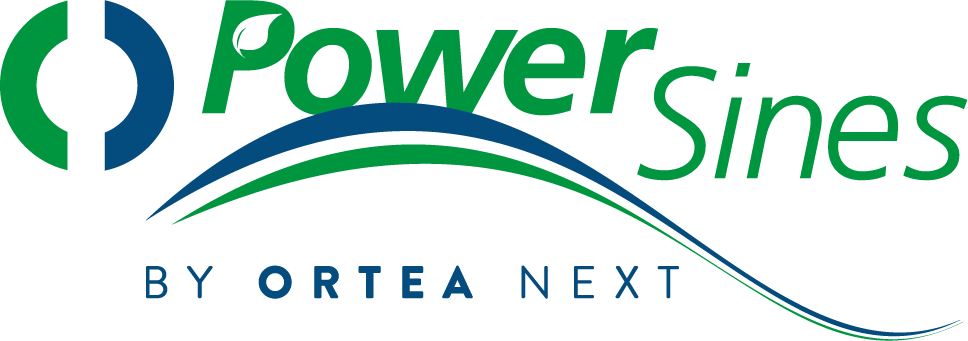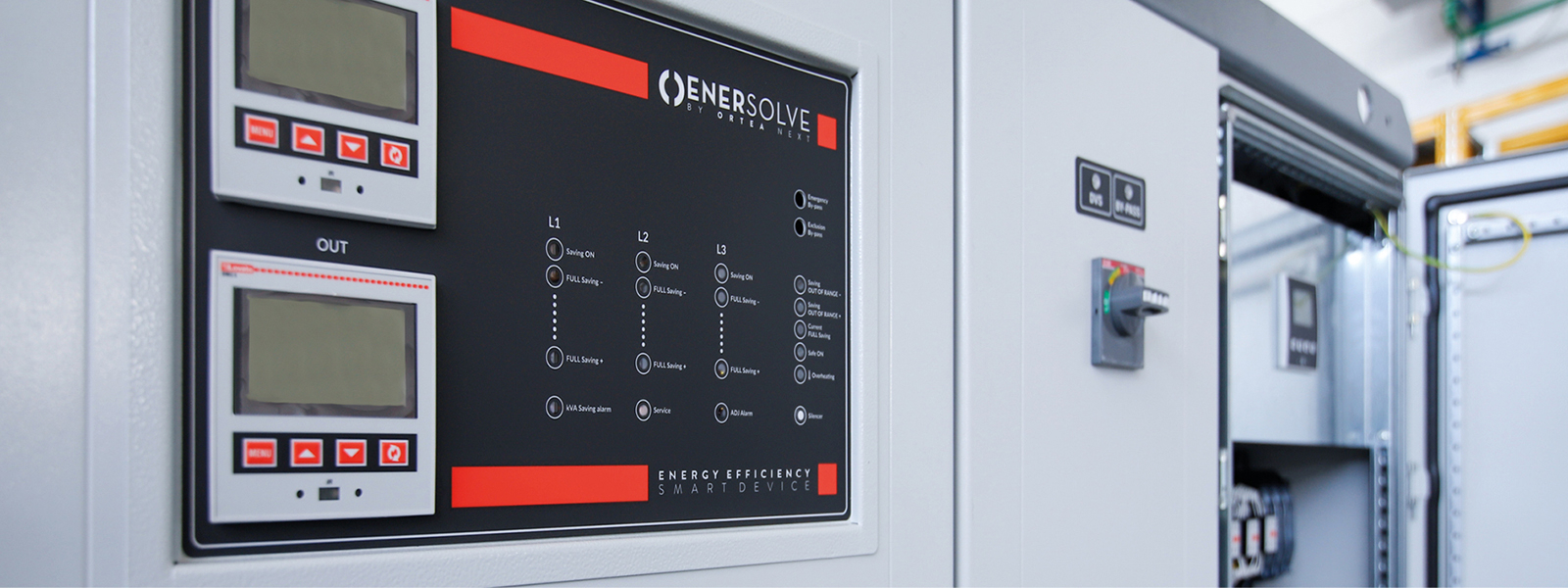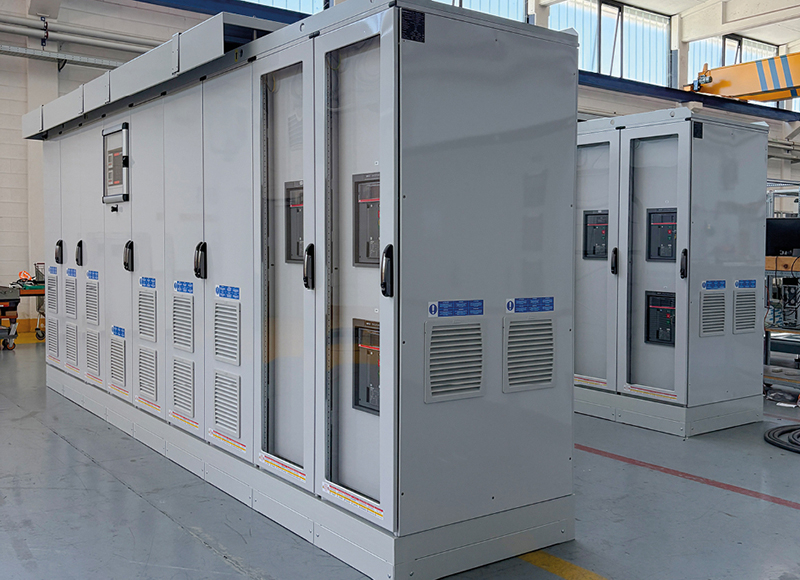Energy efficiency has become a strategic priority for Italian small and medium-sized enterprises and the retail sector. With energy costs among the highest in Europe and regulatory developments toward sustainability, investing in power quality solutions like Enersolve ESL 5 now represents a competitive necessity as well as an opportunity to access Transition 5.0 incentives.
WHY ENERGY EFFICIENCY IS A PRIORITY FOR SMES AND RETAIL
THE IMPACT OF ENERGY COSTS ON COMPETITIVENESS
Italian SMEs face an unprecedented energy challenge. According to updated 2024-2025 data, Italian small and medium-sized enterprises pay 22.5% more for electricity compared to the European average, with an average cost of 28 cents/kWh versus 23 cents/kWh in the rest of Europe.
For the retail and tertiary sector, the situation is equally critical: electricity costs increased by 24% and gas by 27% in 2025 compared to the previous year. The total energy expenditure of the tertiary sector is estimated at 12.5 billion euros for 2025, a 17% increase over 2024.
GRID STABILITY AND OPERATIONAL CONTINUITY
Electrical supply instability represents a concrete risk for SMEs and retail, where every interruption or fluctuation can cause significant economic damage. Stores with refrigeration systems, retail outlets with automated checkouts, and small workshops with electronic machinery are particularly vulnerable to overvoltages and micro-interruptions that can cause operational downtime, data loss, and equipment damage.
SUSTAINABILITY GOALS AND TRANSITION 5.0
European regulations on energy sustainability, through the Energy Efficiency Directive (EED II) and Corporate Sustainability Reporting Directive (CSRD), require retail businesses to improve energy efficiency and monitor their consumption. Transition 5.0 incentives offer significant tax credits for investments in digital technologies and energy efficiency, representing a concrete opportunity to reduce the economic impact of the energy transition.
OVERVOLTAGES AND WASTE: THE TECHNICAL CAUSES OF INEFFICIENCY
WHAT ARE OVERVOLTAGES AND HOW THEY DAMAGE EQUIPMENT
Overvoltages are variations in electrical voltage that exceed the nominal reference value (generally 400V for three-phase systems). Even seemingly minimal increases, such as from +5% to +10%, can cause:
- Electrical stress on electronic components
- Overheating of motors and transformers
- Reduced equipment service life
- Increased energy consumption for the same useful work
WHEN AN ENERGY AUDIT IS THE FIRST STEP
A professional energy audit allows identification of the technical causes of inefficiency and quantification of potential savings. Only through in-depth analysis of load profiles and electrical grid characteristics is it possible to correctly size an optimization solution like Enersolve ESL 5.
ENERSOLVE ESL 5: THE TARGETED SOLUTION TO OPTIMIZE VOLTAGE AND CONSUMPTION
TECHNICAL SPECIFICATIONS: RANGE FROM 45 TO 630 KVA
Enersolve ESL 5 covers a power range from 45 kVA to 630 kVA, specifically designed for the needs of SMEs, retail, and small industrial facilities. The solution easily integrates into existing electrical panels without requiring significant modifications to the electrical system.
HOW VOLTAGE REGULATION WORKS (+10% TO 0%)
The ESL 5 system is optimized to counteract overvoltages, with regulation ranging from +10% to 0% relative to nominal voltage. This characteristic makes it ideal for electrical grids that primarily present voltage excesses, typical of urban and industrial areas with time-varying loads.
The automatic regulation technology constantly monitors incoming voltage and stabilizes it at optimal values, ensuring:
- Reduction of energy waste
- Protection of sensitive equipment
- Improvement of overall system efficiency
IDEAL APPLICATION AREAS: SHOPS, OFFICES, AND SMALL WORKSHOPS
Enersolve ESL 5 is particularly suitable for contexts with medium-low loads typical of retail, light tertiary, and small industry. The solution finds optimal application in:
- Retail outlets and local supermarkets: voltage stabilization for refrigeration systems, LED lighting, and automated checkouts
- Offices and professional studios: protection of servers, IT systems, and air conditioning equipment
- Small workshops and laboratories: consumption optimization for power tools, compressors, and extraction systems
CONCRETE BENEFITS: FAST ROI, INDUSTRY 5.0 COMPLIANCE, AND RELIABILITY
ROI CALCULATION: A PRACTICAL EXAMPLE FOR THE RETAIL SECTOR
For a retail outlet with annual consumption of 100,000 kWh and average energy cost of €0.28/kWh, energy savings of 6-8% achieved with Enersolve ESL 5 translate into a cost reduction of €1,680-2,240 per year. Considering the initial investment and the system’s twenty-year lifespan, the ROI typically ranges between 20% and 30% annually.
The reduction of electrical stress on equipment also brings indirect benefits that are difficult to quantify but equally significant: lower maintenance costs, reduced failures, and greater operational continuity.
HOW TO ACCESS TRANSITION 5.0 FINANCING WITH ENERSOLVE
Enersolve ESL 5 complies with the requirements for accessing Transition 5.0 incentives, which provide tax credits for investments in digital technologies and energy sustainability. The system integrates monitoring functionalities that allow documentation of energy efficiency improvements, a fundamental requirement for obtaining tax benefits.
Investment in a qualified power quality solution can benefit from tax deductions that significantly reduce amortization times, making the adoption of energy efficiency technologies even more cost-effective.
ENERSOLVE ESL 5 VS ESL 10: WHEN TO CHOOSE THE MORE STREAMLINED SOLUTION
The choice between ESL 5 and ESL 10 depends on the customer’s electrical grid characteristics. ESL 5, with regulation from +10% to 0%, is optimal when the critical issues are primarily overvoltages, while ESL 10, with ±10% regulation, is indicated for more unstable grids with fluctuations in both directions.
This segmentation allows selection of the most suitable solution for the actual grid profile, avoiding over-specification and maximizing return on investment.
FREQUENTLY ASKED QUESTIONS ABOUT EFFICIENCY FOR YOUR BUSINESS
- In Which Cases is Enersolve ESL 5 Preferable to ESL 10?
Enersolve ESL 5 is the ideal choice when electrical grid analysis primarily shows overvoltages. The system offers a better cost/benefit ratio in these specific contexts, with a more affordable purchase price and performance optimized for the application. - What is the Power Range Covered by Enersolve ESL 5?
The range covers powers from 45 kVA to 630 kVA, making it ideal for retail outlets, offices, small workshops, and tertiary facilities with continuity and reliability requirements. - Does Enersolve ESL 5 Allow Access to Industry 5.0 Incentives?
Yes, the range complies with the requirements for accessing Transition 5.0 and Industry 5.0 incentives, facilitating the process for obtaining financing dedicated to energy efficiency. - What are the First Steps for an Energy Audit at My Site?
A professional energy audit begins with analysis of historical consumption, detection of electrical parameters, and identification of critical issues. Our specialized technicians can conduct a free site visit to evaluate your system’s savings potential.
Article by the Ortea Technical Team, specialists in Power Quality and Energy Efficiency since 1969. Energy cost information is current as of 2025 and based on official industry sources.







